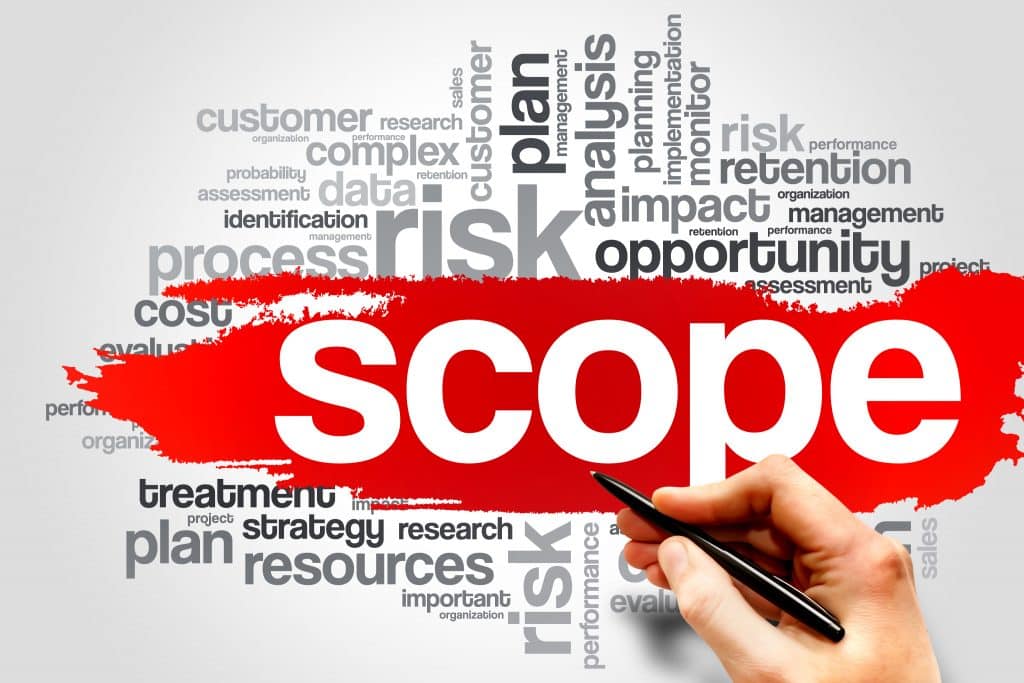- Project Scope
The Scope assesments should include:
– Business need and business problem
– Project objectives, stating what will occur within the project to solve the business problem
– Expected benefits of the project and business values
– Project scope, stated as which deliverables will be included and excluded from the project
Key milestones, the approach, and other components as required by the project nature , size, and complexity.
- RACI/WBS (Work Breakdown Structure)
A project plan is part of an overall methodology for the project management. Clear roles and responsabilities of each stakeholder : role in the governance, main tasks and deliverables, etc.
Not all key stakeholders will review all documents, so it is necessary to determine who on the project needs to approve which parts of the plan. Some of the key players are:
– Project sponsors, who own, fund and support the entire project. Sponsors need to review and approve all aspects of the plan.
– Designated business experts, who will define their requirements for the final solution. They will be part of the project, mainly for the business requirements and the acceptance.
– Project manager, who creates, executes, and monitors the project plan and who is in charge to follow the tasks and achievements.
– Project team, who build the final solution. The team needs to participate in the development of many aspects of the plan, such as identifying risks, quality, and design issues,
– End users, who are the users of the final solution. They too, need to participate in the design tasks and workshops, as well of the plan, and review the plan.
– Others, who are involved for some specific points or specific expertise need : procurement, quality, etc.
- Deliverables
A well-documented project, at each step, with clear identified deliverables : documents, IS solutions, master data, etc.
The project plan have to include as well : risk management plan, a quality plan, a procurement plan, a staffing plan, and a communications plan.
- Planning : a detailed planning, with detailed tasks and owner of the tasks has to be set and accurately follow-up :
– Identify activities and tasks needed to produce each of the work packages, creating a WBS of tasks.
– Identify resources for each task, if known.
– Estimate how long it will take to complete each task.
– Consider resource constraints, or how much time each resource can realistically devoted to this project.
– Determine which tasks are dependent on other tasks, and develop critical path.
– Develop schedule, which is a schedule of all the tasks and detailed resources planning. It shows by chosen time period (week, month, quarter, or year) which resource is doing which tasks, how much time they are expected to spend on each task, and when each task is scheduled to begin and end.
– Create and monitor the cost frame, which is a time-phased budget, or cost by time period.
– Accurate follow it up, with dates and status of each tasks.
- Communication
One important aspect of the project plan is the Communications Plan. This document states such things as:
– Who has to receive which reports, the frequency and the communication mode : regular review, reports by email, newsletter, etc.
– Management of the issues : who is responsible to escalate issues in terms of delays, costs, resources availability, technical issues, etc.
– Documentation storage : ensure to have a common storage place for all documentation (communication, deliverables, minutes, planning) that everybody who needs can access.
Once the project plan is complete, it is important not just to communicate the importance of the project plan to the sponsor, but also to communicate its contents once it’s created. This communication should include such things as:
– Review and approval of the project plan.
– Process for changing the contents of the plan.
– Next steps—executing and controlling the project plan and key stakeholder roles/responsibilities in the upcoming phases.
- Quality and Risks
– Project Quality: Project quality consists of ensuring that the end product not only meets the business specifications.The project quality main role is to prevent error on the final solution. Project quality is a management responsibility and needs to be performed throughout the project.
Creating the Quality Plan involves setting the standards, acceptance criteria, and metrics/KPI to use in the project frame. The plan, then, becomes the basis for all the quality reviews performed during the project and is used throughout project execution.
– Project Risks: A risk is an event that may or may not happen, but could have a significant impact on the project timeline or final delivery of the solution, whenever it may occur. Analyzis of the risks includes making a determination of both the probability that a specific event may occur and if it does, assessing its impact.
These are only some key component of the project plan; without setting measurable rules, goals and keeping track of the efforts and achievements, this remain a key factor to meet a full success.
Emilie Filipe
Consultante Citwell
